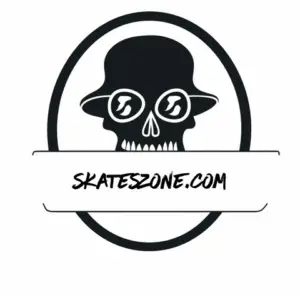Beginning skateboarders often wonder if they need skateboard protective gear. The short answer is no. Protective gear is not a requirement for riding a skateboard, but beginners should use it. Sometimes, skateboarders feel there is a stigma attached to using protective gear. Well, that is true to a point. But, check out this Video of Tony Hawk in Powell Peralta’s classic “Ban This” He’s decked out head to foot in gear because he’s skating a 12-foot vert ramp. For beginners, everything is as dangerous as that ramp.
Skateboarding protective gear is classified by the body part it protects. The list below starts with the most important and useful gear, but riders should use whatever equipment they feel they need. If you can only afford one piece of gear, get a quality helmet. Beware though, not all skateboard helmets are the same.
Types of Gear
Helmet
The first and most important thing to know about skate helmets is that there are two types. One type is suitable for multiple hits, and the other is good for only one use. The Consumer Product Safety Commission certifies single use helmets — with a CPSC sticker — as bicycle helmets, but many are also meant for skateboarding. Multi-use helmets usually meet the European CE 1385 multi-use certification, though some do not.
This webpage explains the differences more than there is room for here, but the important thing to note is that a beginner should get a multi-use helmet. The expanded polystyrene (EPS) foam liner in a CPSC-certified helmet crushes when the skull hits it in an impact, but it does not rebound. It can only take one hit, then it must be replaced. Multi-use helmets typically use a liner that completely rebounds after a hit. It does not provide the same protection level at high speed, but it is fine at slow speeds.
Read our post on Best Skateboard Helmets.
Knee Pads and Elbow Pads
Knee pads and elbow pads are both usually made the same way: An elastic fabric wraps around the appendage above and below the joint, and there is extra padding in the middle. An external plastic cap provides protection for repeated hits. As this Video shows, knee pads are more useful than just protective, as they allow the skater to knee slide out of danger, especially on transitions. Elbow pads have only protective uses.
Read our post on the Best Knee Pads.
As this article from Transworld Skateboarding explains, there is no certification requirement for any skateboard protective gear in the United States. This lack of oversight is especially evident in knee and elbow pads. The protective abilities of this equipment are all up to the manufacturer. There are companies that have been in the business for decades, though, and their equipment has proven itself effective thousands of times over. Europe does have CE elbow and knee pad certifications, but they are not skate-specific.
Other Equipment
Many skateboard protective gear manufacturers make other gear, such as wrist guards and ankle guards. The usefulness of this gear is limited to specific types of slams. Mostly, skateboarders only use this equipment when they are recovering from injury. Anyone prone to falling who is feeling soreness in the wrists or ankles should consider these guards, though.
To an extent, cup-sole shoes might also be considered protective equipment. Padded tongues and thick midsoles provide protection for the foot from spinning boards and other impacts. These shoes greatly restrict the movement of the foot, which is good for those prone to injuries but stifling to some skaters. This video shows a skater with all the gear in use.
Where to Use Protective Equipment
At the Park
Out of liability concerns, some skateparks require riders to wear helmets. Many public skateparks have no helmet requirement at all, but beginners are still wise to wear one. Transition skating can be slippery, and it is easy for even experienced skateboarders to lose their balance and have the board fly out from beneath them. Helmets make this inevitability much less scary. I have never heard of a park requiring knee and elbow pads or any other protective equipment.
On the Street
The beautiful thing about street skating is that there are no rules. You are free to push yourself to your limits — or beyond them — without the Man telling you to put a lid on your head. Unfortunately for many new skaters, finding the limits often means going too far, and things get dangerous quickly. Protective equipment can keep newbies safe as they discover their limitations and learn to nudge them without risking hospitalization.
Conclusion
No one can tell you what to wear when you skate. The smart thing is to get as much protective equipment as you can when you start skating and use it all every time you skate. When you notice you haven’t hit anything in a while, start wearing less of it. Keep the helmet on until you know you’re safe or you will make regrettable mistakes. Everything else will probably heal, but brain injuries are no joke.
If this article helped you understand skateboard safety gear a little better, please share it so the next guy will feel okay wearing it. And tell us what you think about safety equipment in the comments section. Remember, it’s okay skate safe. The only uncool thing is the injuries that come from skating unprotected until we are ready. For more information on helmets and how they do what they do, read this informative article on the CPSC website. Also, check out this Thrasher article on the types of slams. It may not be complete, but the drawings are awesome.
Related Post: Best Skateboards For Beginners
